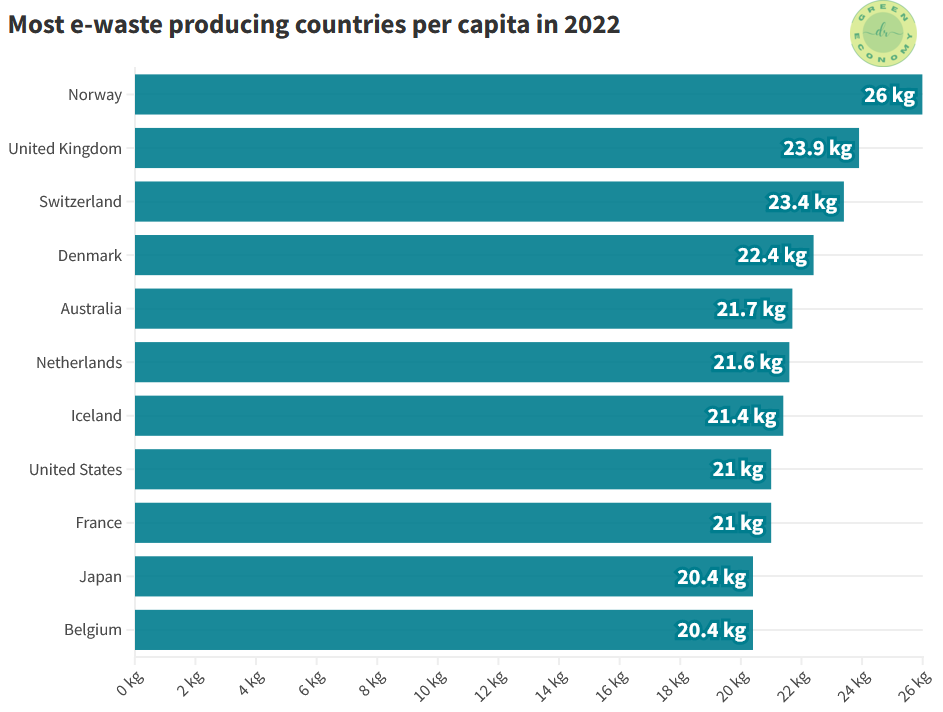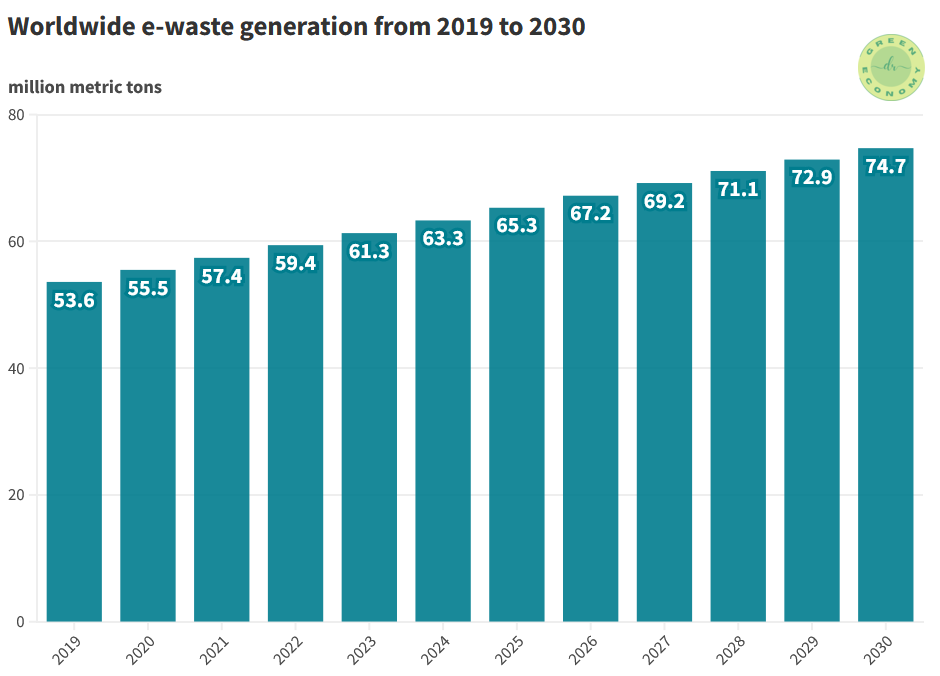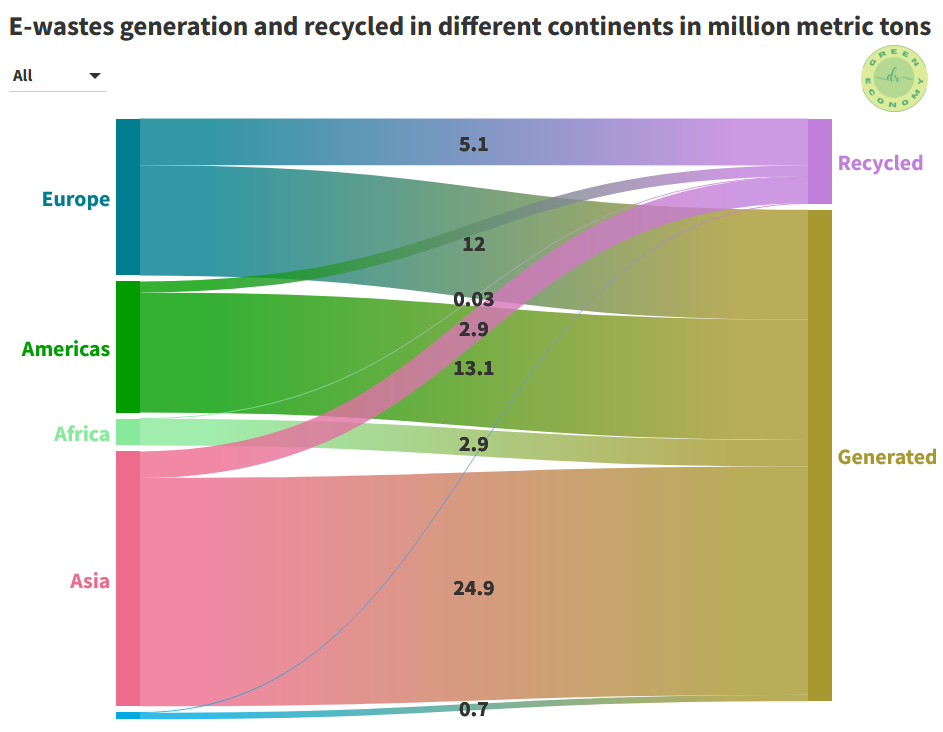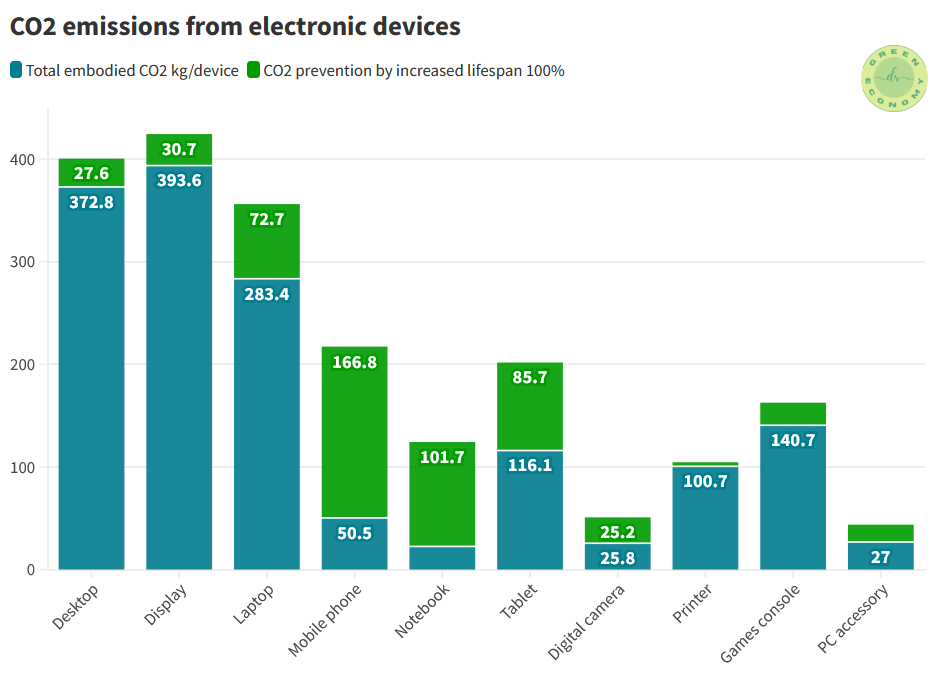EU introduces universal charger policy in 2024 to tackle e-waste crisis

In September 2021, the European Commission tweeted ‘Let's pull the plug on electronic waste’. What was tweeted then will soon come into action— as a celebrated movement to eliminate unnecessary waste from chargers.
In 2024, the European Union (EU) is introducing a universal charger policy to reduce electronic waste (e-waste). Under this initiative, a wide array of electronic devices, including mobile phones, tablets, and headphones only need a USB-C port.
E-waste are the electronic products equipped with a battery or plug, such as computers, laptops, televisions, printers, phones, microwaves, vacuum cleaners, kettles, cables, and more, that have reached their expiration date, are no longer wanted, or are non-functional.
The WEEE Forum projected that the world discarded over 5 billion mobile phones in 2022 alone. On average, the EU households possess 74 electronic products, out of which 17 remain unused. Typically, these unused items include headphones, cables, external hard drives, and smartphones.
E-waste crisis
E-waste is considered hazardous primarily because of the use of materials during the manufacturing process. When disposed of in landfills, toxic chemicals naturally seep out from the metals. This contaminates the soil and groundwater, endangering food supply systems and water sources.
While it's hard to measure the exact quantity of unrecycled e-waste on Earth, we could do some estimation based on the latest available information (Figure 1).

Norway currently generates the highest amount of e-waste per capita in the world. The UK follows closely, producing 23.9 kilograms (kg) of e-waste per capita but is projected to surpass Norway by 2024. Switzerland ranks third on the list, producing 23.4 kg of e-waste per capita.
Some countries adopt informal recycling practices which only expose workers to dangerous and cancer-causing substances like mercury, lead, and cadmium.
Improper e-waste management not only leads to health and pollution issues but also causes a substantial depletion of valuable raw materials like gold, platinum, cobalt, and rare earth elements.
Interestingly up to 7% of the world's gold may presently be locked within e-waste, with a tonne of e-waste containing 100 times more gold than a tonne of gold ore.
E-waste generation continues to grow
E-waste has become one of the fastest-growing waste streams globally, primarily triggered by the rapid progress of technology, combined with consumer’s demand for electronics and shorter product lifecycles.

As demonstrated in Figure 2, over the period from 2019 to 2022, e-waste generation witnessed a substantial surge of approximately 11%, reaching about 59.4 million metric tons. If it continues as such, by 2030, annual e-waste production will soar to about 75 million metric tons and as high as 120 million metric tons by 2050.
How is e-waste managed?
In 2022, the global production of e-waste amounts to more than 59 million metric tons annually— that is more than the combined weight of all commercial airliners ever manufactured. The value of annual e-waste production exceeds $62.5 billion, excelling the gross domestic product (GDP) of many nations.
However, only 17% of the total global e-waste is officially documented to undergo collection and proper recycling processes yearly. Where the remaining waste go remains largely unknown, indicating that substantial quantities of recoverable raw materials are likely to be discarded or incinerated.
Numerous rich nations export significant quantities to developing regions that lack adequate waste management systems, such as certain parts of Africa. Particularly in Ghana, where one of the largest e-waste sites globally is situated, this practice is increasingly posing health and environmental concerns.
Read: When will fossil fuels run out?
How much e-waste do people produce?
Although Asia is responsible for nearly half of the global e-waste production, primarily led by China, Europe exhibits a significantly higher per capita e-waste, averaging more than 16 kg annually. In Asia, it amounts to approximately five kg. On a global scale, the average e-waste generation per capita amounts to approximately seven kg annually.

Comparatively, in Africa, the per capita e-waste generation is even lower. Unfortunately, these regions also tend to have a higher likelihood of discarding e-waste, which often ends up in landfills or undergoes incineration rather than being appropriately recycled.
Recently scientists have simulated the estimated total CO2 emissions from different electronic devices and how much it could be saved by increasing the useful lifespan expectancy of electronic devices by 50% and 100%. The result for the estimated CO2 emissions with and without a 100% lifespan increase is shown in Figure 4.

Will the new law solve EU’s e-waste problem?
Ruediger Kuehr, head of the United Nations Institute for Training and Research office in Bonn, Germany spoke to The Verge and emphasized the significance of the current action while acknowledging that it will not significantly reduce the substantial accumulation of e-waste.
Approximately 54,000 metric tons of chargers are wasted annually on a global scale, which is around 0.1% of the total e-waste, as reported in the 2020 Global E-Waste Monitor.
In Europe, the accumulation of unused and discarded chargers amounts to approximately 11,000 metric tons of e-waste each year, which is less then 1% compared to how much e-waste is generated in Europe (see Figure 3).
However, this transition to USB-C is projected to result in significant cost savings for consumers, estimated at up to 250 million euros a year, by eliminating the need for unnecessary charger purchases.
Determining whether the EU's new regulation will eliminate the 11,000 metric tons of discarded chargers in Europe each year is a challenging assessment. Requiring only one charger may reduce the cost and the e-waste but it comes with another potential risk that lower prices may encourage individuals to purchase additional chargers for multiple rooms, which could potentially contribute to an increase in e-waste.
Ultimately, this new law could have adverse effects on consumers both within Europe and globally. But there are still larger parts of the e-waste that need attention. For example, how to potentially reduce environmental risks, while extracting valuable, precious, and critical raw materials embedded within e-waste need immediate attention.
Read: Sustainability jobs: 42 million renewable energy jobs by 2050
Some potential solutions include designing durable products, implementing buy-back and return systems for used electronics, and promoting the transition to rental and leasing models to minimize ownership, thereby maximizing product reuse and recycling opportunities.
Summary
- The EU plans to implement a universal charger policy starting in 2024
- The policy mandates the use of USB-C ports for a wide range of electronic devices, including mobile phones, tablets, and headphones
- E-waste refers to discarded electronic products with batteries or plugs, such as computers, phones, and appliances
- Norway, the UK, and Switzerland are among the countries generating the highest e-waste per capita
- E-waste production continues to rise globally due to technological advancements, consumer demand, and shorter product lifecycles



